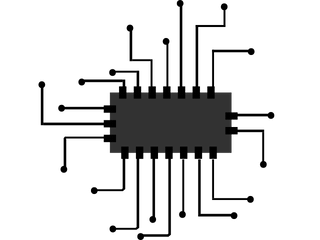What is Infrastructure Monitoring?
Infrastructure monitoring is the practice of overseeing the critical components of a computer system or network in order to ensure that they are functioning as intended. By identifying and addressing issues early, infrastructure monitoring can help organizations avoid system failures and outages.
There are a variety of different tools and techniques that can be used for infrastructure monitoring, and the approach that is best suited for a particular organization will vary depending on its size, structure, and specific needs.
However, some of the most common components of an infrastructure monitoring strategy include:
- Network monitoring: This involves tracking the performance and availability of the network infrastructure, including routers, switches, and other devices.
- Server monitoring: Server monitoring tracks the performance and availability of servers, as well as the applications and services that run on them.
- Application monitoring: Application monitoring monitors the performance of individual applications and services.
- Storage monitoring: Storage monitoring tracks the performance and availability of storage devices, including SANs, NASs, and RAID arrays.
- System monitoring is important for overall system health and for identifying potential issues before they cause problems. By monitoring key system metrics such as CPU and memory usage, organizations can proactively address any potential problems before they cause an outage.
Best Practices for Infrastructure Monitoring
There is no question that effective infrastructure monitoring is critical to the success of any organization. By monitoring network and system performance, organizations can identify issues before they cause major problems and ensure that critical systems are running smoothly.
There are a number of best practices that organizations should follow when implementing infrastructure monitoring. One of the most important is to ensure that the monitoring solution is tailored to the specific needs of the organization. Each organization is different, and will have different systems and networks that need to be monitored.
Another important best practice is to ensure that the monitoring solution is properly configured and implemented. This includes configuring the monitoring solution to collect the appropriate data, and ensuring that it is integrated with the organization’s systems and networks.
It is also important to ensure that the monitoring solution is kept up-to-date. As systems and networks change, the monitoring solution must be updated to reflect those changes. This includes updating the monitoring solution’s software and rules, and configuring it to collect new data.
Organizations should also ensure that they have a plan for responding to alerts generated by the monitoring solution. When an issue is identified, it is important to have a plan for resolving it as quickly as possible. This includes identifying the appropriate personnel to address the issue, and ensuring that the necessary resources are available.
Finally, organizations should regularly test their monitoring solution to ensure that it is functioning properly. This includes testing the monitoring solution’s data collection and alerting functions, as well as its ability to identify and resolve issues.
By following these best practices, organizations can ensure that their infrastructure monitoring solution is effective and tailored to their specific needs.

